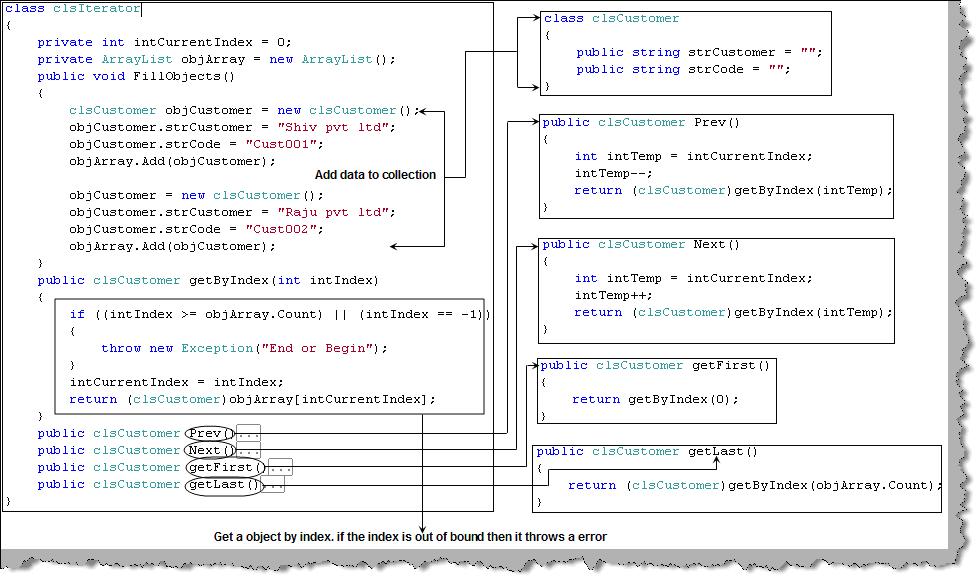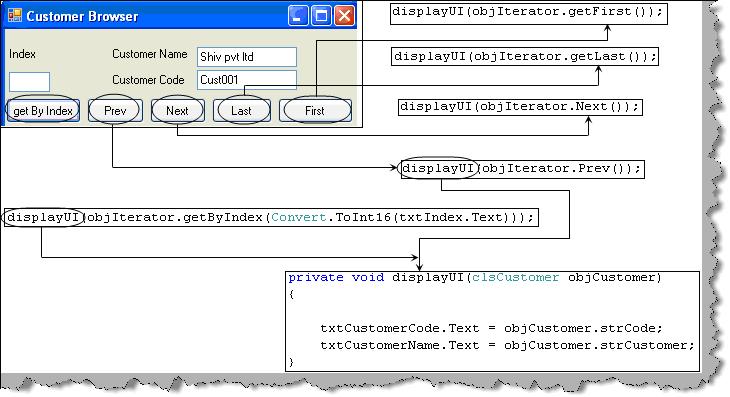Iterator pattern allows sequential access of elements with out exposing the inside code. Let’s understand what it means. Let’s say you have a collection of records which you want to browse sequentially and also maintain the current place which recordset is browsed, then the answer is iterator pattern. It’s the most common and unknowingly used pattern. Whenever you use a ‘foreach’ (It allows us to loop through a collection sequentially) loop you are already using iterator pattern to some extent.
 Figure: – Iterator business logic
Figure: – Iterator business logic
In figure ‘Iterator business logic’ we have the ‘clsIterator’ class which has collection of customer classes. So we have defined an array list inside the ‘clsIterator’ class and a ‘FillObjects’ method which loads the array list with data. The customer collection array list is private and customer data can be looked up by using the index of the array list. So we have public function like ‘getByIndex’ ( which can look up using a particular index) , ‘Prev’ ( Gets the previous customer in the collection , ‘Next’ (Gets the next customer in the collection), ‘getFirst’ ( Gets the first customer in the collection ) and ‘getLast’ ( Gets the last customer in the collection).
So the client is exposed only these functions. These functions take care of accessing the collection sequentially and also it remembers which index is accessed.
Below figures ‘Client Iterator Logic’ shows how the ‘ObjIterator’ object which is created from class ‘clsIterator’ is used to display next, previous, last, first and customer by index.
 Figure: – Client Iterator logic
Figure: – Client Iterator logic